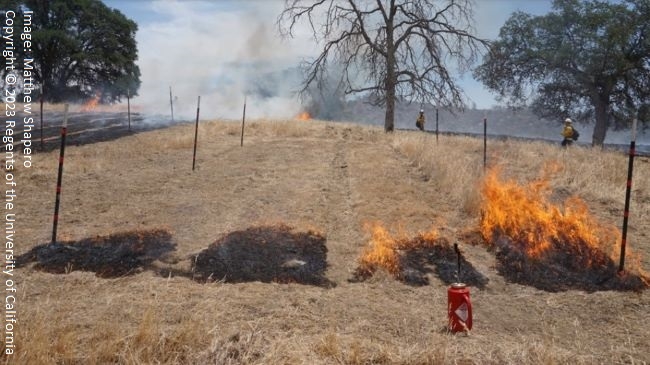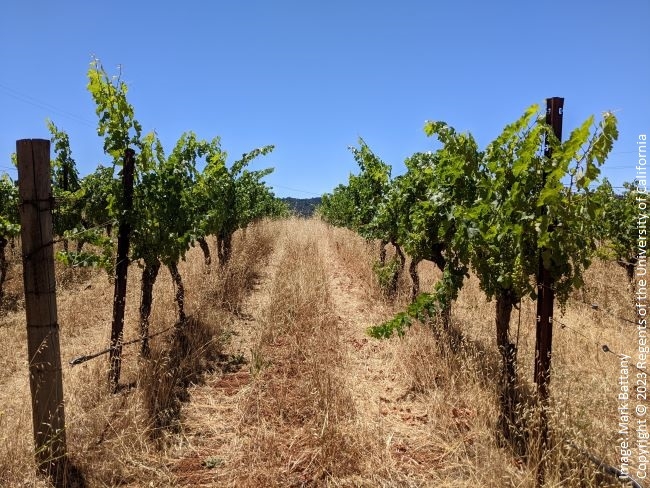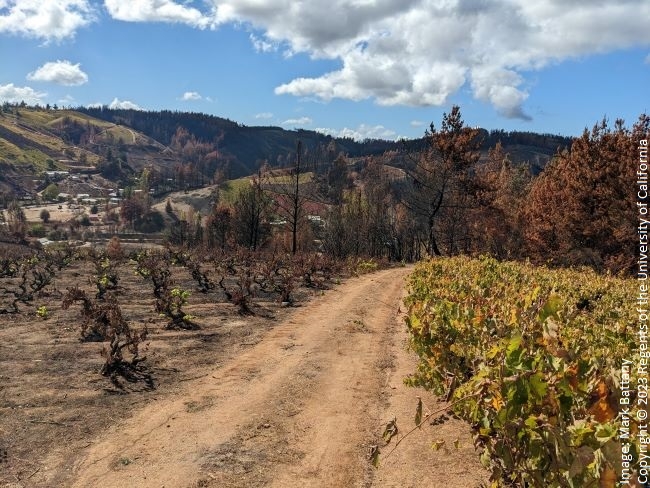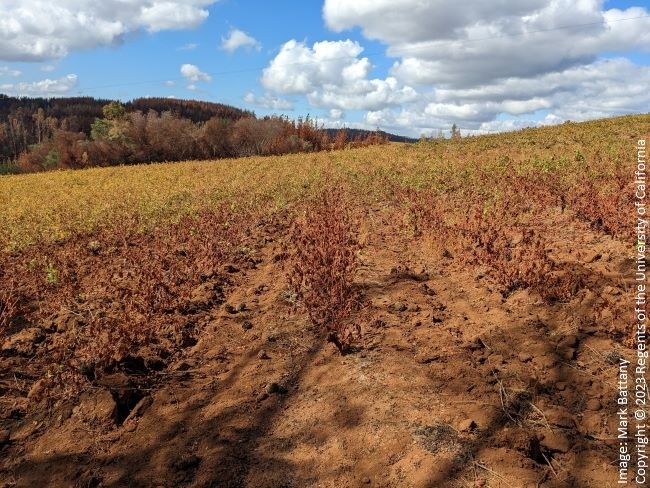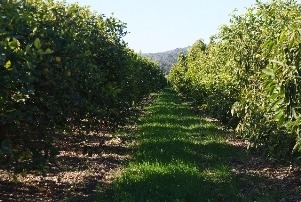Vineyards and orchards have long used winter cover crops to help reduce erosion, improve soil structure and prevent nutrient leaching. Growers are being encouraged to increase their use of cover crops to help capture atmospheric carbon dioxide and fix it as soil organic matter, thus helping mitigate climate change.
However the dry residues resulting from abundant cover crop growth can also serve as a highly flammable fuel if fire occurs at the vineyard or orchard. The risk of fire occurring in any given year is likely small, but many coastal areas of California are rated as having a very high or high fire hazard (see the Fire Hazard Severity Zones Maps).
The picture below offers a clear visual example of just how flammable these dry plant residues can be. This is from an experiment by Livestock and Range Advisor Matthew Shapero and colleagues of how different grazing levels affect fuel quantities and therefore fire behavior. The plots with low fuel levels burn at lower fire temperatures and with lower flame lengths while the higher fuel levels result in much more intense fire behavior.
The California vineyard pictured below in July 2022 is an example of how the management decisions with cover crop residues can result in a very elevated fire risk. This cover crop of oats has full surface coverage and the abundant residues have mostly been left standing. The vines themselves and especially the drip irrigation lines are at very high risk of burning if fire was to ever occur under these conditions. The lack of bare ground under the vine rows will also allow fire to move across the rows and potentially impact the entire vineyard from a single ignition point.
The picture below is from an area in Chile which suffered extensive forest fires in early 2023. In this region, vineyards which had large amounts of dried cover crop residues suffered far more damage than vineyards without such residues. The vineyard on the left had a large amount of dried residues from a lupine cover crop and as a consequence burned very intensely, while the vineyard on the right had very little dried residues and had virtually no direct fire damage to the vines.
Another example from the same region is the effect that the burning of adjacent trees had on a vineyard with little dried residues. In the picture below tall burned pine trees were directly behind the photographer (you can see the shadows of the trunks) but only the near edge of the vineyard was damaged by radiant heat from the burning trees. Undoubtedly many burning embers landed within the vineyard as the trees burned, but the lack of dried residues resulted in no fires within the vineyard.
The take home message from this short article is that dried cover crop residues are highly flammable! With the abundant rainfall in California this past winter we are seeing heavy growth in cover crops this spring which will lead to heavy levels of dried residues this summer. For vineyards and orchards in higher fire risk areas these residues should be managed to help minimize the risk of catastrophic damage if a fire was to occur there.
With all this rain, the trees and the cover crops are thriving, but with an annual cover crop that dries out when the soil moisture dries up, it could be a fire hazard. It should be mowed prior to fire season.
Thanks, Mark Battany, for the reminder - https://ucanr.edu/blogs/blogcore/postdetail.cfm?postnum=56817
